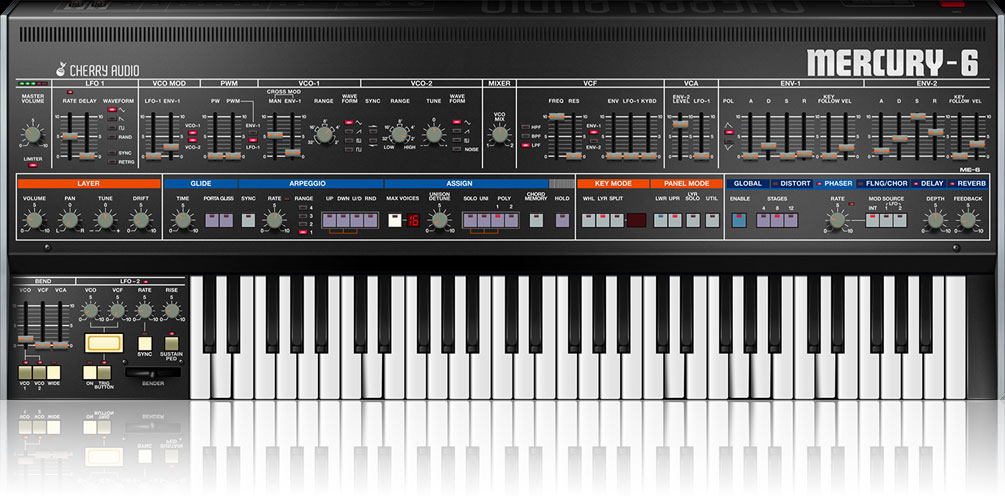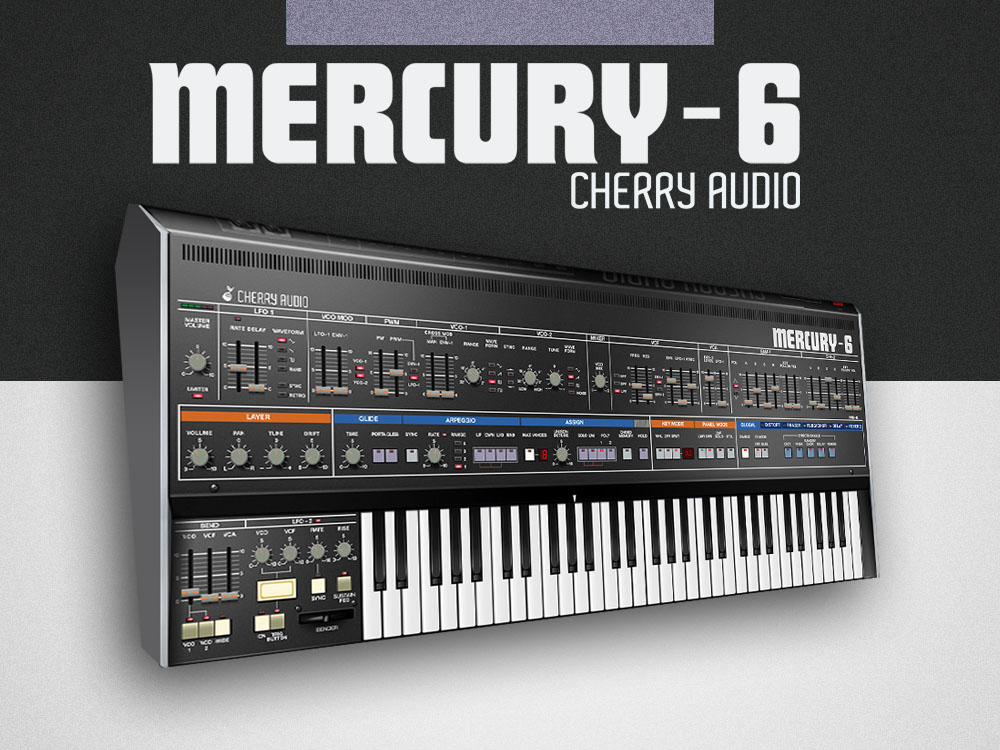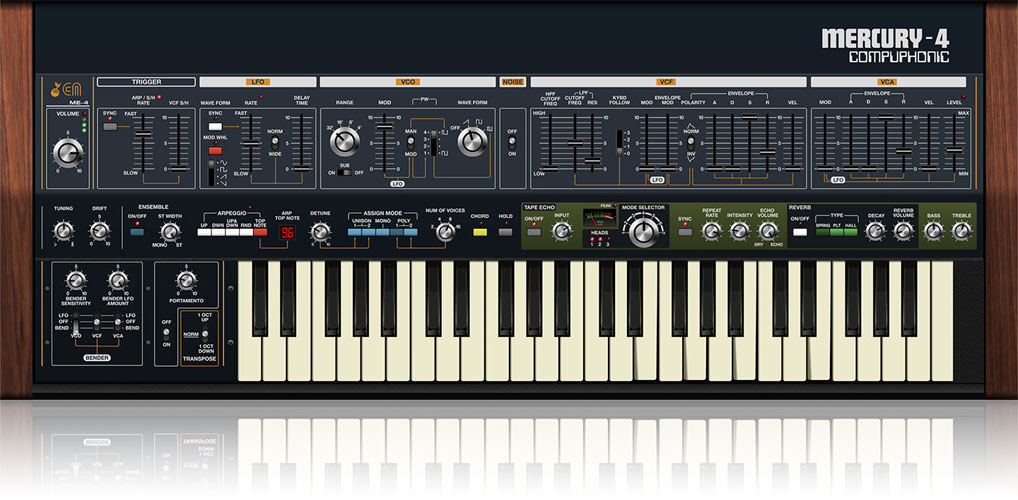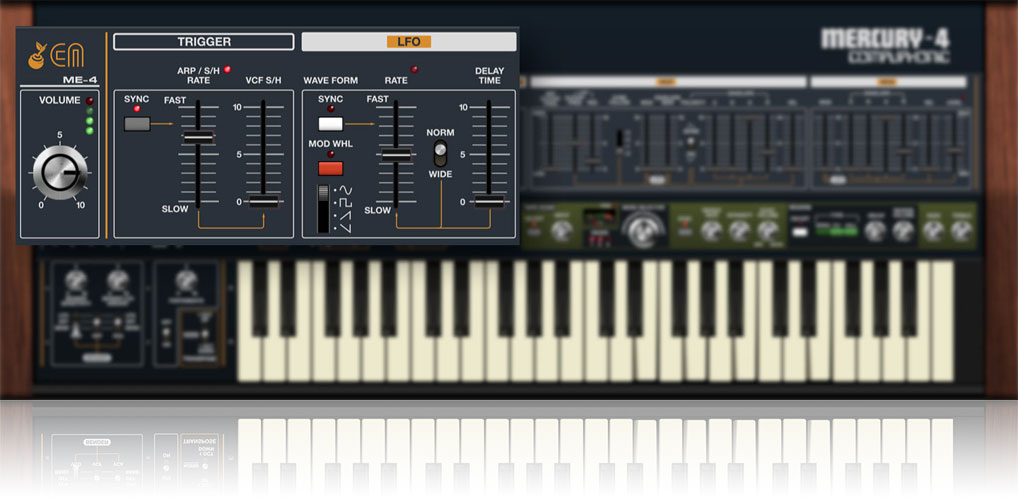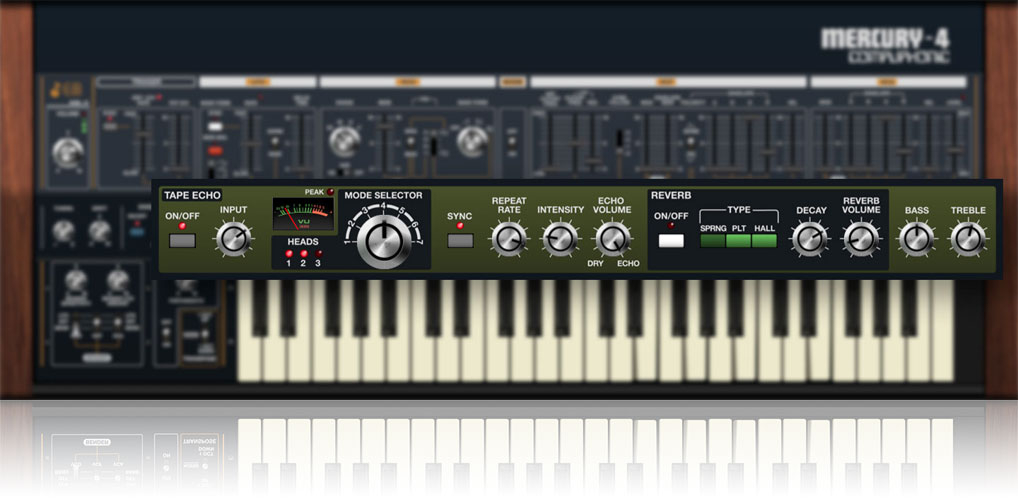You're currently on:
The Sleeper Has Awakened
Mercury-6 is a meticulous recreation of the Jupiter-6 analog polyphonic synthesizer, initially released in 1983. Sandwiched between the earlier Jupiter-4 and Jupiter-8 models in name only, the sophisticated Jupiter-6 has sometimes been considered a sleeper release. These days, it has persevered to become one of Roland's most notable and coveted classic synthesizers due to its distinctive dark and complex character. If you've long yearned to explore the Jupiter-6, you'll love Mercury-6!
The Year Everything Changed
Released in 1983 as a more affordable alternative to the flagship eight-voice Jupiter-8, the six-voice Jupiter-6 nevertheless staked out an essential position in the history of analog polysynths. Though similar in appearance and feature set, the Jupiter-6 sounded considerably different from the Jupiter-8. The Jupiter-6's versatile filter design lent a more aggressive sound than previous Jupiters, making it a natural for cutting-edge techno and electro styles.
The Jupiter-6 VCOs supported multiple simultaneous waveforms, and its two LFOs and oscillator cross mod capabilities provided extensive modulation possibilities. Its earthshaking solo and poly unison modes enabled massive lead and bass sounds, and it was one of the first synthesizers to include the then-new MIDI protocol. However, the cost-cutting in the Jupiter-6 design resulted in some disadvantages. Audio output was mono only, and it was limited to six-voice polyphony, hampering the potential of its split keyboard feature. And its timing was ill-fated with the release of Yamaha's revolutionary DX7 the same year. But in a testament to the Jupiter-6's staying power over the decades, its popularity grew in genres such as big beat, house, and techno. As a result, the original hardware is still in demand today.
Mercury-6: Twice As Nice at a Fraction of the Price
Cherry Audio's Mercury-6 captures all that is exceptional in this classic and boosts the extraordinary feature set and functionality for today's DAW production and workflow. We've added velocity sensitivity, improved the split mode, and added a layer mode capable of stacking two different sounds simultaneously with per-layer stereo panning, detuning, and sustain. A panel control lets users easily select and navigate between these layers and includes a utility function for exchanging settings between the lower and upper layers, or even between presets. And with polyphony extended to 16 notes, Mercury-6 won't easily run out of voices.
We've reproduced the arpeggiator, including the hidden Up/Down modes of the original, and augmented it by adding a Random mode and MIDI tempo sync. A chord memory mode enables multiple notes to be stored and played back with a single key. We've improved the functionality of the LFOs with a retrigger for LFO-1 and an always-on option for LFO-2, both syncable to MIDI tempo.
We've also introduced an integrated studio-quality effects panel with brilliant-sounding distortion, phaser, flanger/chorus, delay, and reverb. With additional touches such as per-layer drift control, over 500 expertly designed presets, and flexible MIDI mapping, Cherry Audio's Mercury-6 brings the authentic Jupiter-6 experience 40 years into the future.
Mercury-6 Features
Highly optimized,massive dual-layer voicing architecture with 16 polyphonic voices per layer. Keyboard split or stacked layer modes allow two simultaneously playable layers, with separate per-layer controls for all parameters, including effectsSystem Requirements
Mercury-6 is available in AU, VST, VST3, AAX, and standalone formats.
A free 30-day demo of Mercury-6 is available. This demo will play white noise periodically, but is otherwise unlimited.
macOS Requirements: macOS 10.13 or above. macOS 13 Ventura supported. 64-bit required. Native Apple M1 processor support, including Apple M1 Ultra. 3.4 GHz Quad-Core or M1 CPU with 8GB of RAM recommended.
Windows Requirements: Windows 7 or above (including Windows 11), 64-bit required. 3.4 GHz Quad-Core computer with 8GB of RAM recommended.
NOTE: Internet connection required for product activation.
Poly In The Beginning
Originally released in 1978, the Roland Jupiter-4 synthesizer was one of the earliest instruments to combine voice-assign polyphony with digital patch storage - that is, the ability to store and recall sounds to a digital memory and recall them at the touch of a button. By "voice-assign polyphony,” we're referring to instruments with a finite number of independent synthesizer voices (four, in this case) that digitally scan the keyboard and assign notes to onboard voices. These days, voice-assign polyphony and digital patch storage are taken for granted, but this was a HUGE deal in the late 70s when options for polyphonic synthesis were mostly limited to crude string synthesizers based upon 60s organ technology, and patch recall was generally limited to how fast you could twirl knobs and flick switches!
In its day, the Jupiter-4 was overshadowed by larger, more complex (and far more expensive) instruments from American synth manufacturers, and on paper, its specs weren’t as impressive. But specs don't tell the whole story, because the Jupiter-4 sounds fantastic, with a raw, raunchy tone not found in any of the other beloved Juno and Jupiter synths. Its analog oscillators have a uniquely aggressive tone quality, the built-in sub oscillator adds girth, its oddly fast and deep LFO modulation capabilities allow it to create uniquely whacked out modular synth-like tones, and Roland's famous stereo chorus "ensemble" circuit is beautifully implemented, adding a boatload of width and dimension.
The original instrument had its share of caveats, including a meager eight user patch locations, no edit mode for stored patches, just four voices of polyphony, it weighed a ton (a portly 42 lb!), and the lack of oscillator autotune meant a cold breeze could send it careening out of tune. Cherry Audio's Mercury-4 addresses every one of these issues, with up to 16-voice polyphony, infinite patch storage, easy patch editing, and much more.
In addition to recreating the Jupiter-4's uniquely powerful oscillator and filter tonality, Mercury-4 beautifully replicates Roland’s renowned stereo ensemble effect. We’ve also added a truly other-worldly "Space Echo"-style tape echo with multiple reverb modes. The tape echo perfectly recreates the warm tonality and subtle speed variations that make the original Space Echo units so desirable, and the reverb section expands upon the original spring reverb with plate and hall modes for enhanced spatial depth.
Features
Authentically modeled oscillator with sub oscillator
All filter characteristics modeled, including powerful low-frequency resonance
Up to 16-voice polyphony
Over 300 presets, programmed by industry veterans
Exactingly replicated unique arpeggio section w/tempo sync
Carefully modeled wide-range LFO modulation with "inverted" mod characteristics
Drift control for increased analog realism
Precisely replicated stereo ensemble effect
Warm and organic tape echo with multiple reverb modes
Tempo-syncable LFO
Detunable unison mode
Single-key chord memory mode
Highly optimized coding for high performance with ultra-low CPU load
Advanced one-click UI magnification
Comprehensive MPE support
Full MIDI control and DAW automation for all controls
System Requirements
Mercury-4 is available in AU, VST, VST3, AAX, and standalone formats.
macOS Requirements: macOS 10.9 or above (including macOS 12), 64-bit required. M1 processor compatible (via Rosetta 2). Quad-core computer with 8GB of RAM recommended.
Windows Requirements: Windows 7 or above, 64-bit required. Quad-core computer with 8GB of RAM recommended.
| Variant | 1 |















































